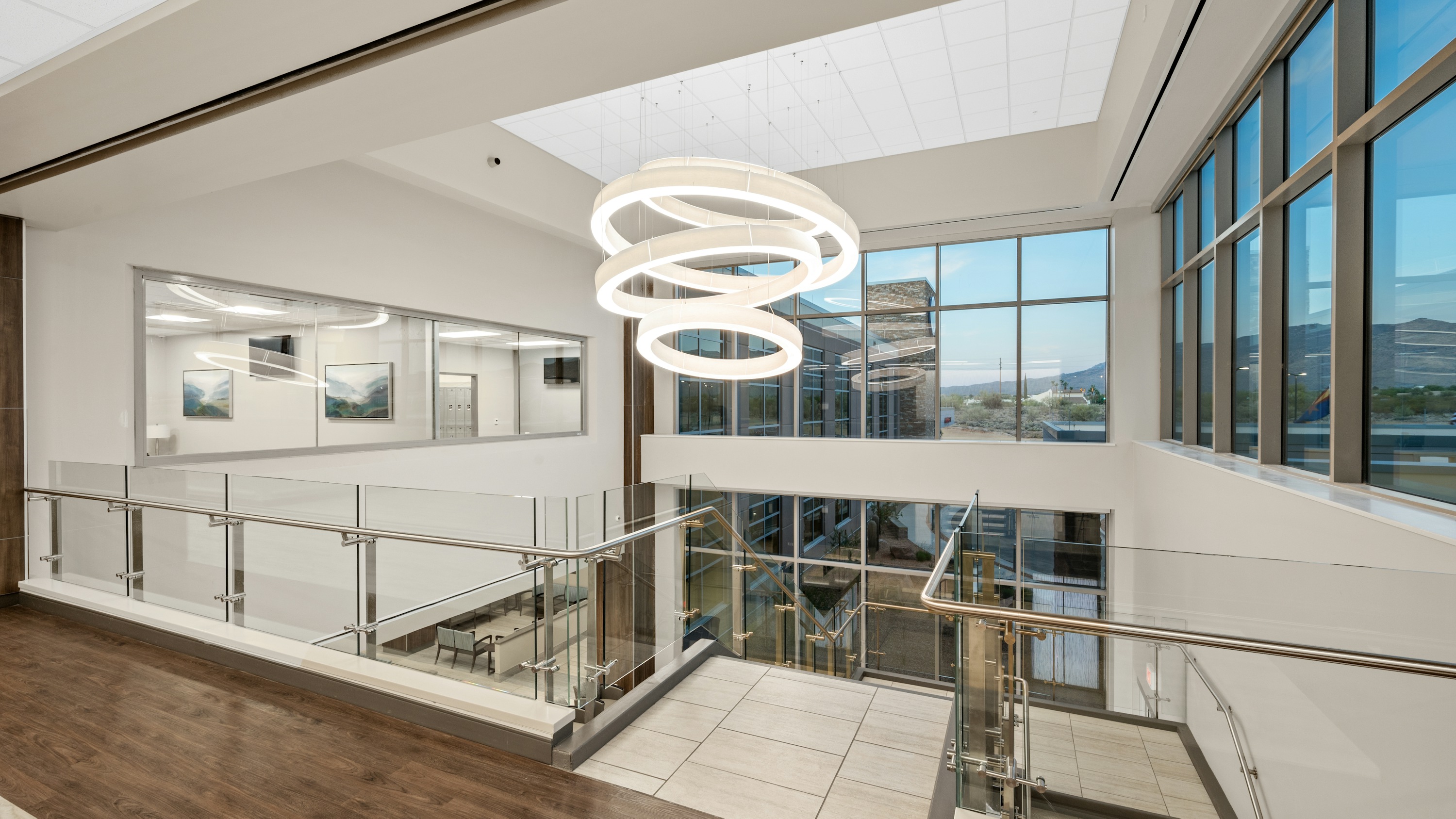
Healthcare spaces have been transforming rapidly over the last few years to meet the evolving needs of both staff and patients. Many hospital and healthcare systems are looking to center facilities around even more human-centric design to create spaces that prioritize patient well-being, staff efficiency and the seamless integration of the latest advancements in medical care. Our team sees many trends and opportunities taking shape across the industry in the coming years that will redefine the capabilities, sustainability and resilience of these facilities and elevate healthcare design to new heights.
As we enter 2024, we asked our team of healthcare leaders across our offices in Colorado, Tennessee, Minnesota and Illinois for some of the most notable design opportunities shaping healthcare facilities across the country. Continue reading for our 4 for ‘24 and a few design opportunities for the new year.
Continuing to design with patient and care team comfort in mind
The healthcare landscape is continuing to emphasize patient-centric design, ensuring spaces promote both healing and comfort. Our team makes sure to incorporate soothing color palettes, natural light and furnishings to create environments that alleviate stress and enhance the overall experience. We also incorporate biophilic design to enhance a healing environment, which can include views to the outside, artwork or adding greenery into rooms and other spaces where appropriate. From welcoming lobbies to private crisis rooms, every space is carefully crafted to prioritize the well-being of patients, their families and the team members who care for them.
Integrating decarbonization and other sustainable energy options into designs
Recognizing the significant environmental impact of healthcare facilities, architects and owners alike are prioritizing strategies to reduce carbon emissions and enhance overall environmental sustainability. Our team is working with clients to move toward decarbonization and transition away from fossil fuels and other harmful energy sources. We’re dedicated to the AIA 2030 Commitment, and the decarbonization trend in healthcare spaces not only aligns with this mission but also underscores a commitment to promoting health and well-being on a national scale.
Ensuring building resilience by planning ahead
Recently, owners have been looking for more resilience and performance in their facilities. Healthcare facilities need to function through any emergency, as lives are dependent on them, so backup and redundant services are a must. Our team also encourages clients to incorporate more resilient performance design aspects during the planning and designing stages to help reduce costs over time and better prepare for potential climate or manmade disasters.
Alleviating staffing shortages through functionality and technology
Owners throughout the country have also been navigating staffing shortages across the board. Designing facilities that are as efficient as possible helps reduce operating costs and maintain functionality with less staff. Robotics and technology, such as delivery robots and telehealth services, are also being integrated throughout many hospital departments to help throughput and assist with staff efficiencies.
Our expert team is committed to serving as a trusted advisor to our clients and industry partners. Do you want to connect further with our team for your upcoming projects in 2024 and beyond? Get in touch today!